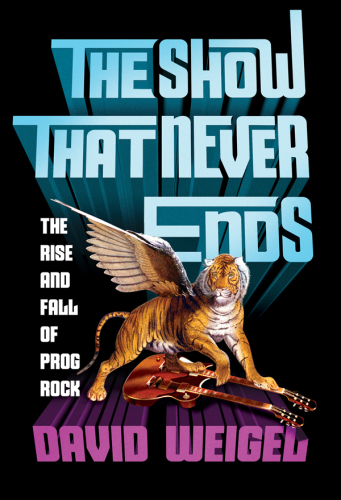
The Show That Never Ends
The Rise and Fall of Prog Rock
کتاب های مرتبط
- اطلاعات
- نقد و بررسی
- دیدگاه کاربران
نقد و بررسی

April 10, 2017
Drawing heavily on interviews with musicians, music industry insiders, and fans, Weigel, a progressive rock enthusiast and Washington Post reporter, provides a workmanlike, sentimental, and well-researched survey of a music genre that became popular in the mid-1970s. Weigel defines three musical modes of progressive rock: retrospection, futurism, and experimentation. He then highlights the artists who led the rise of the music— Emerson, Lake, and Palmer (ELP), Genesis, King Crimson, the Moody Blues, Procul Harum, and Yes, among others—as it developed out of psychedelic music and heavy metal. Prog rock trades in the ethereal and the spiritual; according to Robert Fripp, one of the founders of King Crimson, the music “leant over us and took us into its confidence.” Weigel instructively reminds readers that some bands wove in the elements of classical music—ELP released an entire album of their version of Mussorgsky’s Pictures at an Exhibition—and creatively used instruments such as the Moog synthesizer to experiment and go beyond the borders of rock. Progressive rock’s popularity eventually waned in the late ’70s as punk came into vogue, but Weigel wistfully reminds readers that prog rockers were once pioneers in writing “gooseflesh-raising music.”

May 1, 2017
Dinosaurs once roamed the Earth. Then came prog rock, as this partial but pleasing account of the love-it-or-hate-it genre chronicles.As Washington Post reporter Weigel cheerfully admits, professing a love for progressive rock--that sometimes-pretentious, sometimes-endless blend of rock, classical, and jazz forms whose chief premise would seem to be an absence of any discernible African-American influence--can quickly get a person branded as a dweeb. Indeed, as the narrative opens, the author is among "the most uncool people in Miami," preparing to climb aboard a cruise ship with "the living gods of progressive rock," namely mostly old men with what rock writer John Strausbaugh uncharitably called "melting cheese faces." They are also mostly British, and Weigel does a good job of describing what happened to American rock when it fell into the hands of the British kids in orchestra, filtered by way of psychedelic rock and its "simple formula" of guitar, drums, bass, vocals, and keyboard. By 1969, bands like Yes, Emerson, Lake and Palmer, and King Crimson were beginning to come together, forming a distinct genre marked by compositional complexity and odd time signatures. Some of Weigel's roster is debatable--purists may argue about including Jethro Tull in the annals of prog, since Tull was really a blues band to which something strange happened along the way--and it's a little light on the Canterbury scene, but the author ably captures the ambition of rock nerds who, as Yes singer Jon Anderson put it, saw "the possibility of rock music...really developing into a higher art form." Points and plaudits are due for enlisting Rush, too, and for including the yobbos of Marillion, one of whose fans Weigel credits with inventing crowdfunding in the service of reviving a genre nearly killed off by prog-hating punk in the 1970s. Prog fans will take to this book like Keith Emerson to an upside-down Hammond.
COPYRIGHT(2017) Kirkus Reviews, ALL RIGHTS RESERVED.

September 4, 2017
Washington Post reporter Weigel draws on interviews with musicians, industry insiders, and fans in this history of progressive rock. He traces its beginnings from the early 20th century to its initial influencers in the 1960s, full emergence in the ’70s, and downward turn in the ’80s and ’90s, profiling numerous musicians along the way, including the Beatles, ELO, Kansas, and King Crimson. Voice actor Sanda stands in for Weigel in the audio edition, but never captures the author’s enthusiasm for his subject. Too often, his narration is flat. The book makes use of a lot of quotes from the people Weigel interviewed, but in Sanda’s reading there’s no way of distinguishing when a quote ends. As with other productions that adapt text about sound into an audio format, this one fails to capitalize on using sound creatively or to its advantage. A Norton hardcover.

























دیدگاه کاربران